Text
10 Best Dog Breeds For Seniors
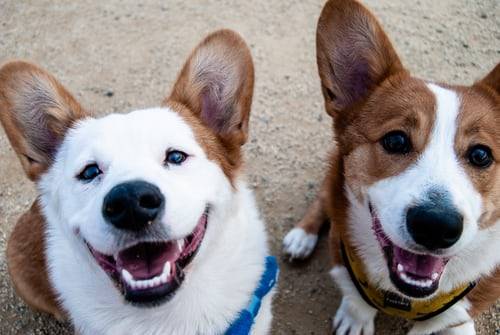
Dogs are called man’s ally for a reason. Few things are more comforting than the soft wriggle of a dog or their eager scamper once you open the door. A pet is often the right companion as you agree down into your time of life. While every dog is different regardless of what its breed, dog breeds are an excellent place to start out when trying to find the right pet.
Take a glance at this list of best dog breeds for seniors. The pooches that made the list are easy to worry for, even-tempered and typically permitted in an assisted living community.
1. English cocker spaniel While not sufficiently small for each assisted living community, cocker spaniels are still medium-small, averaging around 20 pounds. Though not necessarily lap dogs, they still make great pets as they're loyal, cheerful and enthusiastic. they need a good temperament, but they’re also high energy, so they’re not right for each senior.
An English cocker spaniel needs attention, exercise, and daily brushing. Although they’re more high-maintenance than others on the list, their love of life makes the right match for several active seniors.
2. Schnauzer Schnauzers are lovable, frisky and may easily become friendly yet fiercely loyal companions. Any dog that’s good with kids gets an A+ rating for those seniors who regularly have grandkids visiting, though their energy levels are often negative for those seniors with health issues.
Schnauzers home in size, but even those communities with stringent pet size requirements will likely let within the miniature variety.
3. Pug While not everyone likes the smashed-in face of a pug, those that do find it impossible to travel back to the other breed. Pugs are small, in order that they easily fit community living requirements. They’re also adorable, eager, and skills to pour on the charm.
Despite having short hair they are doing tend to shed, but they require less exercise than most breeds. Pugs are an excellent companion for any senior with health issues which will prevent them from taking their pooch on a daily stroll.
4. Chihuahua If you’re in need of a little dog, then a chihuahua could be perfect for you. While many of us consider chihuahuas as skinny and brown with a whip tail, chihuahuas are available many colors and two fur lengths. They’re affectionate, filled with personality, and protective.
Chihuahuas tend to be barkers, however, so yours might need training to remain quiet. Since they’re so small, a couple of games of indoor fetch can supply their daily exercise.
5. Beagle One of the classic dog breeds, beagles are funny, easy-going and playful. you'll choose an honest old-fashioned cliché and name your beagle Snoopy, since the favored Peanuts character is, in fact, a beagle. Beagles easily make friends with everyone, including other dogs.
They can be strong-minded, however, so don’t expect their training days to be easy! They shed, but don’t require considerably brushing. Beagles need many exercises, so they’re not the proper fit for an inactive senior.
6. Shih Tzu A perfect size, Shih Tzus are bred to be companion dogs. They live an extended time, enjoy curling up in their owner’s lap, and have a frisky, charming personality. They’re alert, high-energy dogs, and that they do tend to bark. If you would like a quiet, mild-mannered dog, Shih Tzus might not be the simplest choice for you.
If you’re trying to find a friendly and affectionate dog, however, they’re well well worth the consideration. They require both a daily walk and indoor playtime and make excellent companions for the senior living a lively retirement.
7. Pomeranian While Pomeranians are often noisy, they’re also small, cute and intelligent. They like to please their owners and that they love getting attention. As long as they get their daily dose of playtime and affection, they don’t require the maximum amount of exercise as other dog breeds.
They also don’t need much grooming apart from a daily brushing of their tail. If barking isn’t a priority, otherwise you can find a pom with a light personality, they might be the right breed for you.
8. Poodle One of the foremost intelligent breeds, poodles are available in many sizes. From the dimensions of a retriever to the dimensions of a Chihuahua, poodles are prized for the very fact that they don’t shed and are hypoallergenic.
Poodles are proud, easy to coach and adaptable. they are doing require an honest amount of exercise, though, so confirm you've got a playtime plan before you adopt one.
9. Yorkshire terrier Yorkshire Terriers have beautiful long hair that needs regular grooming, but it’s worthwhile for those that love these silky pooches. Yorkshire terriers need a daily walk but don’t require excessive exercise.
They’re small, intelligent, and eager and their love of attention and human interaction makes them an ideal companion animal – especially for seniors living alone.
Yorkies can get bossy and protective, but some good training at the start usually paves the way for a drama-free relationship.
10. Boston bull Boston Terriers are another breed of dog specially bred to be a companion. They’re a manageable size, friendly, and straightforward to groom. They like to bond with their owners and cuddle up within the evening. Boston terriers are aware of their owner’s needs, and besides being playful and easily-pleased, they have a friendly nature that creates them successful with many seniors.
The right dog can make a cheerful retirement even more fulfilling. confirm you are doing your research and choose a breed that matches your lifestyle to make sure an ideal match.
0 notes
Text
10 Foods You Should Never Feed Your Dog Or Cat
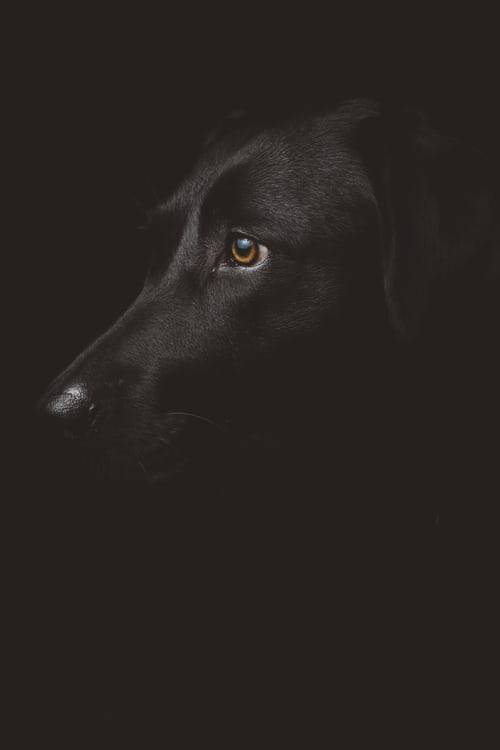
When you bring a dog or cat into your home, you would like to treat them sort of a valued member of the family. It is often tempting to offer them extra treats or share your food with them. that concept is perpetuated by taking home a “doggy bag” from a restaurant also as how we see pets portrayed in movies and tv shows.
While with some foods it's perfectly fine to share, there are foods that will cause serious health problems or maybe a death in your pet. Many commonly thought of “treats” are instead foods that are dangerous for your dog or cat. These two lists include foods to avoid for both dog and cat owners.
Five Foods to Avoid for Dogs: Xylitol Xylitol may be a sweetener that will be found in food, gum, and a few diet foods. If your dog eats something containing Xylitol, it can cause a drop by blood glucose. If you think that your dog has gotten into something with Xylitol, here are some early symptoms to seem out for: vomiting, coordination problems, and lethargy. If not treated, this will cause seizures and liver failure within a matter of days.
Onions and Garlic Onions and Garlic, in any form, are harmful to your dog. If ingested in the least, they will kill your dog’s red blood cells, which eventually results in anemia (a condition marked by a deficiency of red blood cells or of hemoglobin within the blood). If your dog eats an outsized quantity, even just one occasion, it can cause poisoning. Things to observe out for if you think that your dog has ingested onions or garlic including breathing problems, weakness, and vomiting.
Caffeine Caffeine is in numerous things in your house, including coffee, tea, chocolate, caffeinated soda, medication, and energy drinks. Ingesting any of those things containing caffeine are often fatal to your dog. If you think your dog has gotten into something with caffeine, take them to the vet immediately.
Macadamia Nuts It only takes six macadamia nuts to form your dog sick. The symptoms to seem for if your dog has eaten macadamia nuts include heat, vomiting, weakness in back legs, and muscle shakes. Macadamia nuts are dangerous on their own, but mixing chocolate with macadamia nuts can cause death in your dog.
Pitted Fruits Persimmons, peaches, and plums should be kept out of reach of your dog. While the fruit is okay (although not ideal) for your dog, Hell is dangerous. There are two issues with these fruits, both are found within the pits. The pits from these fruits can cause an obstruction within the intestine if swallowed. Secondly, cyanide is present in peach and plum pits, which can poison your dog if ingested.
Five Foods to Avoid for Cats: Alcohol Alcohol can become a significant issue for your cat. Not only can cats get drunk, which isn't healthy for them, it also takes a really bit of alcohol to cause brain and liver damage. If your cat ingests as little as a tablespoon of alcohol, they might lapse into a coma. quite a tablespoon can cause death.
Dairy Milk and dairy products, while commonly related to cats, can cause digestive problems. Cats are generally lactose-intolerant, so it's safer for your pet to not set down that saucer of milk.
Grapes Grapes and raisins are referred to as treats for cats, but they ought to not be. a little amount of grapes or raisins can make your cat hyperactive and vomit repeatedly. While some cats tolerate grapes and raisins well, others react so poorly it's best to stay them out of reach of all of your cats.
Raw Eggs Raw eggs can cause an equivalent issue for cats that they are doing for humans. If there's any bacteria within the raw egg, it could lead to gastrointestinal disorder. Raw eggs also can create a problem together with your cat’s absorption of biotin, which may cause skin and coat issues.
Tuna Tuna is another thing that people think is sweet to offer to your cats when actually it can cause health issues. There are two sorts of tuna, one for humans and therefore the other for cats. Feeding a cat a tuna-based cat chow is simply fine, the difficulty comes in once you feed tuna for human consumption to your cat. Tuna that's made for humans doesn't have the nutrients needed to support your cat’s nutritional needs and may also cause inflammation of the fat cells in your cat’s body when ate up a daily basis.
Having pets may be a joy also as a responsibility. Hopefully, these lists of dangerous foods, while not exhaustive, are an honest place to start out keep a cheerful and healthy pet in your home. If you think that your pet has gotten into anything on these lists, or the other food that's potentially dangerous, please contact your veterinarian immediately for further advice.
0 notes
Text
7 Dog Breeds That Need The Least Attention
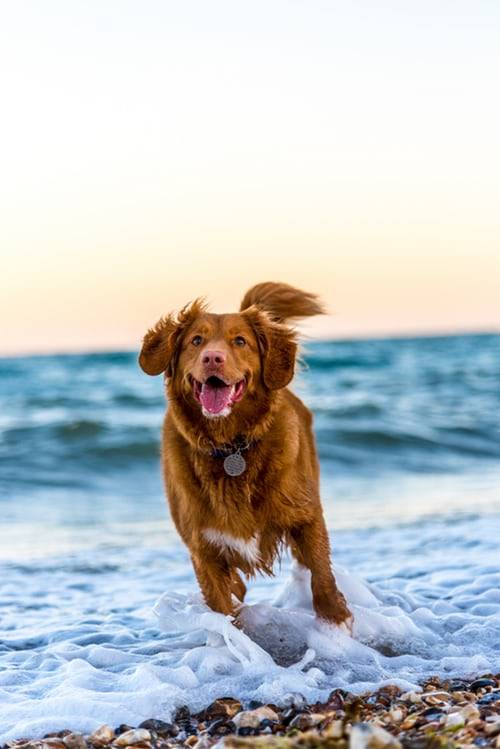
There are tons of individuals out there who avoid getting a dog because they’re scared of what proportion attention they have. If you're employed long hours, frequently travel, or simply aren’t the sort to urge outside to play with a dog on a day to day, you'll think that canine ownership will never be for you.
Fortunately, some dog breeds demand far less attention than others and should be suitable choices for those that don’t have hours each day to lavish on their pets. Here are seven dog breeds that require the smallest amount of attention.
Bull Mastiff You may not think a dog that will grow to 130 pounds would be low-maintenance, but the working dog makes an ideal apartment dog. Despite their size, they don’t need much exercise and are usually fine with a brief walk. Very calm and laid back, a working dog will likely spend the time while you’re away sleeping and only needs a couple of toys and a few affection from you once you return to stay a cheerful pet.
Chow Chow Chow chows are more like big cats than dogs, and their aloof nature and disrespect for strangers often make them an off-putting choice for true dog lovers. However, for those that need a low-maintenance dog that doesn’t mind them being gone for long periods of your time, the Chow Chow is often the right breed. These are great watchdogs but usually aren’t good with kids so that they should usually be avoided by families with young children.
Chihuahua Chihuahuas are so tiny you would possibly actually find it possible to require it with you to several places you go during the day—even the office! But albeit your workplace features a strict no-dogs policy, this tiny canine will usually be fine being left alone. If you socialize your chihuahua when it’s a puppy, you'll expect this small pet to be relatively low-maintenance. they are doing need daily teeth-brushing, though, and a correct diet to avoid obesity.
French Bulldog Not one for long runs or an excessive amount of time outdoors thanks to its inability to inhale humid weather, the French bulldog loves naptime and is one among the smallest amount vocal dog breeds. This makes them an honest choice for apartment living — especially if you propose to be gone during the day.
French bulldogs will demand your attention once you get home from work, but they’re unlikely to be destructive or restless while you’re away. These are affectionate dogs and that they love kids, so they’re appropriate for families. And though they are doing suffer from some health problems thanks to their facial structure, French bulldogs are easy to groom and train, making them perfect for those that need a low-maintenance companion.
Shih Tzu If you’re trying to find a friendly, small dog that’s great with kids and maybe content on its own while you’re at work, look no further than a Shih Tzu. These are very lovable dogs who enjoy being with their owners, but they’re almost as proud of the corporate of another dog of an equivalent breed, so consider getting two if you propose on being out of the house daily. This breed does need regular grooming, though, so expect to brush them daily and take them to knowledgeable groomers once they need a trim.
Lhasa Apso These funny little dogs were bred as royal watchdogs and still believe themselves to be the most important, baddest dogs within the park. However, this is often just a show and therefore the Lhasa may be a playful and constant dog that won’t hold it against you if it’s left to its own devices for the bulk of the day.
These are independent dogs who usually only answer commands when it suits them, but their lovability will cause you to forgive them whenever. They’re intelligent and playful and, though they will have high energy, some games and running around your house or apartment is typically enough to wear them out. This breed does need daily brushing and regular baths, but it’s worthwhile to stay their splendid coats shining.
Basenji The Basenji may be a strange little breed from Africa that tends to yodel rather than bark and grooms itself sort of acat. If you’re trying to find something within the “different” category, the Basenji could also be right up your alley!
Independent and poised, these dogs are visually impressive and intelligent and tend to make a robust bond with their owners. they're distrustful of strangers and don’t mix well with other pets (unless they’re of an equivalent breed), so don’t expect tons of socialization with this dog. However, if independence and devotion is top on your list and you’re willing to attend until one among these hard-to-get puppies is out there, this might be the breed for you.
Having a dog as a pet is often an incredibly rewarding experience filled with love, companionship, and fun. If you don’t have plenty of attention to offer, though, it’s vital you select an independent breed and won’t be heartbroken if left alone for long periods of your time. Give one among these seven breeds a go for an interdependent relationship that will last for years.
0 notes
Text
8 Dogs Who Were Famous Before The Internet Was Invented
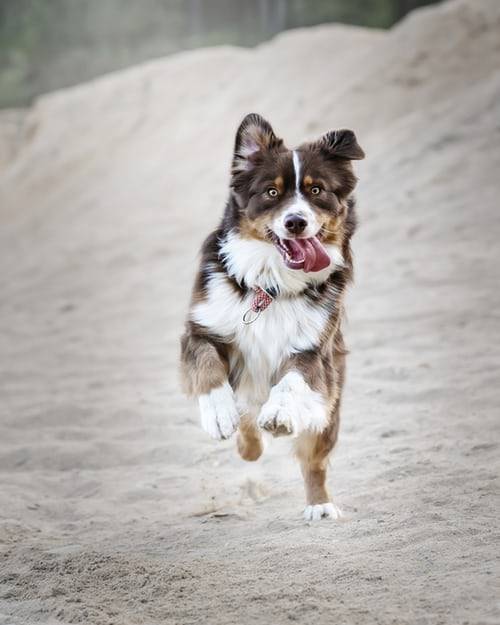
It looks like everyone’s dog features a dog Instagram account today, but dogs are going viral for many years. Here are eight great canines are known and loved the planet over before the web was a thing.
Rin Tin Tin
This German shepherd (and there are several on this list) was discovered on a battlefield in France during the primary war by an American soldier who took the dog home with him and trained him to act in silent movies. He ended up making almost 30 films over his lifetime and, consistent with Hollywood legend, saved Warner Brothers studio from bankruptcy before talking movies were even invented. He even has his star on the Hollywood Walk of Fame.
Hachiko
In the 1920s, a Japanese Akita named Hachiko was so faithful that he would meet his master, Professor Ueno, at the Shibuya railway station every evening and walk him to the train the morning. The professor had a sudden attack at work and died. Hachiko waited for him to urge off the train, and when he didn’t, Hachiko came back to satisfy the subsequent day’s train. He continued to try to do this a day for nearly ten years. This dog didn’t get a star, but he did get a statue at the railway station and therefore the love of the entire nation.
Hachiko | 8 Dogs Who Were Famous Before the web Was Invented | Life360 Tips
Checkers
Famous as a part of one among the most important political speeches of all time, Checkers was an English cocker spaniel belonging to then-Senator Nixon. During his campaign as Eisenhower’s presidential campaigner in 1952, Nixon was accused of accepting private donations, which was an enormous no-no some time past. because it happens, one among those donations was this dog to Nixon’s daughter Julie. Nixon went on national television and delivered what’s mentioned as “The Checkers Speech,” during which a candidate averted disaster by deflecting the error, saying in essence, “But the youngsters love this dog, does one need me to require it far away from them?” — and he won the vice presidency. Although Checkers is well-remembered as Nixon’s dog, he gave up the ghost in 1964, four years before Nixon himself was elected president.
Old Drum
This hound became famous only after his death, but he became a logo for dogs everywhere. In 1869, An attorney named George Graham Vest took the case of a dog who was shot by a neighbor. The owner sued for damages and Vest’s closing arguments referred to as “Eulogy to a Dog” and including the phrase “Man’s ally,” managed to make a legal precedent regarding how dogs are viewed in court matters. Vest won the case, and later became a U.S. senator; a bust of the dog is within the Missouri Supreme Court building in Jefferson City.
Old Drum | 8 Dogs Who Were Famous Before the web Was Invented | Life360 Tips
Balto
The world’s most famous sled dog, Balto was a part of a life-saving team in 1925 that made a 650-mile trek during a blizzard to deliver diphtheria serum from Nome to Anchorage, Alaska in only 5 days. an equivalent route is that the Iditarod Trail — and therefore the famous dog sled race was created in honor of this historic run. There’s a statue of Balto in New York’s Central Park and his taxidermied remains are displayed within the Cleveland Museum of explanation.
Buddy
You may not know this German shepherd but you recognize what she inspired. In 1928, a 20-year-old named Morris Frank, blind for four years, acquired a dog in Switzerland that had been specially trained to steer the blind. ahead of incredulous reporters, he crossed a dangerously busy street referred to as Death Avenue with the dog leading him safely to the opposite side. Buddy was the primary seeing-eye dog within the U.S. Six months later, Frank founded the Seeing Eye organization to coach dogs to help humans.
Buddy | 8 Dogs Who Were Famous Before the web Was Invented | Life360 Tips
Laika
Back in 1957, the space race was underway; after successfully launching Sputnik 1, the Soviets chose a former stray mutt named Laika to be the primary life being embarked on orbit. Unfortunately, the launch was a one-way trip. The official story was that she was euthanized by remote after six days in orbit but the reality was she died just a couple of hours after launch thanks to high temperatures. But her short flight did pave the way for future crewed missions.
Pompey
The oldest entry during this list may be a pug dog belonging to William, Prince of Orange, within the 16th century. “William The Silent” was nearly assassinated while in France; Spanish insurgents tried to enter his tent in the dark during a campaign, but his dog woke him up by jumping on his face. The dog was honored by being immortalized next to the prince on his tomb at the church of St. Ursula in Delft, Netherlands.
0 notes
Text
How to Treat a Dog Bite at Home
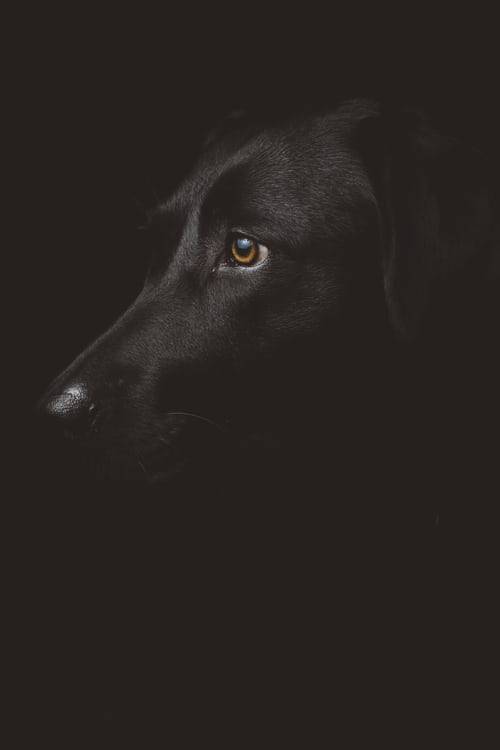
Dog bites are common, especially in children. There are more dog bites in warm months than within the colder months.1 Nobody knows why aside from to guess that dogs and youngsters are more likely to return together on sunny days.
Treating a bite should start with the security of all involved, including the patient, the rescuer, and if possible, the dog. Dogs don’t always utter aggression, repeatedly they utter fear. If we will make the animal feel safe, it’d be the simplest thanks to making everyone around it feel safe also. Immediate Treatment Here are recommendations on the way to treat a bite reception.2 Stay Safe. Secure the dog and/or the patient. Move one faraway from the opposite. Dogs may bite because their territory is threatened. If the dog’s owner is around, instruct him or her to secure the dog. If not, move the patient to a secure location. take care of starting any treatment until there’s an inexpensive expectation that the dog won’t attack again. Controlling bleeding can often be done at an equivalent time as you’re making the world safe, especially if the patient can help hold pressure. If you’re not the patient, practice universal precautions and wear personal protective equipment if available. Control any bleeding by following the acceptable steps. Avoid employing a tourniquet unless there’s severe bleeding that can’t be controlled the other way.3 Once the bleeding is controlled, clean the wound with soap and warm water. don’t be afraid to wash inside the wound. make certain to rinse all the soap away, or it’ll irritate later. Cover the wound with a clean, dry dressing. you’ll put antibiotic ointment on the wound before covering, but it isn’t necessary. await signs of infection: Redness Swelling Heat Weeping pus When to ascertain the Doctor Always call a physician to work out if you ought to be seen. Some dog bites need antibiotics, particularly if they’re deep puncture wounds. Additionally, many municipalities have regulations for reporting dog bites and monitoring the dogs, which is usually initiated by contact with a doctor.2 Any unidentified dog runs a minor risk of carrying rabies. it’s extremely rare, but if the dog can’t be identified and therefore the owner cannot show proof of rabies vaccination, the patient must seek medical attention. Rabies is usually fatal to humans if not treated.4 The wound may have stitches. If the sides of a laceration are unable to the touch, or if there are any avulsions, the wound will need emergency medical attention. Wounds on the face or hands should be seen by a physician due to the likelihood of scarring and loss of function
0 notes
Text
How Kids and Dogs Can Stay Safe Together
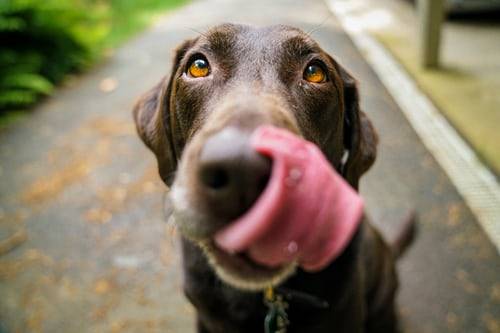
Many kids get older with a dog within the house. And in most cases, it’s great. Having a pet has many benefits, including teaching responsibility if your child helps look out of his daily needs. Having a dog also offers companionship and may teach social skills, like to not be too rough when playing.
Plus having a dog is often tons of fun. Dogs Bite One of the most downsides of allowing your children, especially younger ones, around a dog is that sometimes dogs bite. Children are more likely to be bitten than adults and about one in 5 bite injuries requires medical attention.1 These dog bites are enormous ill health, but a largely preventable one. that’s why it’s important to assist reduce your child’s chances of being bitten by a dog. Preventing Dog Bites One of the simplest and most vital things that you simply can do is to not leave your younger children alone around a dog, not even the family dog. According to the CDC, other tips include:1 Do not play aggressive games together with your dog; for instance, wrestling. Never approach an unfamiliar dog. Immediately report stray dogs or dogs displaying unusual behavior. Remain motionless when approached by an unfamiliar dog – never run or scream. If knocked down by a dog, lie still and remain during a ball. If bitten by a dog, immediately report the bite. One myth of dog bites is that your child will presumably be bitten by a dog he doesn’t know. However, most experts report that about half-dog bites are from a dog that the kid could also be conversant in, either the family’s dog or that of a neighbor.1 Which Dogs Bite? There are some reports which will indicate that certain breeds of dogs are more likely to bite or be involved in fatal bites than others. for instance, one study published in 1994, Which Dogs Bite? A Case-Control Study of Risk Factors, found that biting dogs were more likely to be ‘German Shepherd or Chow Chow predominant breeds, to be male, to reside during a house with one or more children, and to not be neutered’ and 'were also more likely to be chained while within the yard.'2 Other samples of aggressive dogs, which can have a better attack rate, include the Bull Terrier, English cocker spaniel, Collie, Doberman, Great Dane, Pitbull, Rottweiler, and Siberian husky. However, consistent with the American Veterinary Medical Association, 'There is not any such thing as a nasty breed of dog. All dogs can bite if provoked.'3 So rather than concentrating on the breed of dog, you ought to just keep your kids safe around any dog. Although most dog bites aren’t fatal, many do require medical attention. additionally to basic care and cleaning the wound, after a bite, your child may need:1 Antibiotics A tetanus shot And/or a rabies vaccination You should seek immediate medical attention for multiple or serious bites, especially in younger children and bites that involve your child’s head and neck. As with other wounds, you ought to stop any bleeding by putting pressure on the wound then clean the world extensively.1 Keep in mind that the majority of dog bites aren’t sutured closed, due to this risk of infection. Bites on the face or those considered to be 'clean’ or quickly seen by the doctor could also be sutured sometimes .4 Tetanus Shots for Dog Bites Other preventative measures that you simply may have to require to include getting your child a tetanus shot and tetanus immunoglobulin if they need to be had but three doses. Even if they need had three or more tetanus shots, if they need a bite that’s not considered clean and minor, they’ll need a tetanus shot if it’s been quite 5 years since their last one.1 Children with clean, minor bites can also need a tetanus booster if their last one was quite 10 years ago. Since most youngsters have had 4 tetanus shots by 18 months aged and a booster at 4 and 12 years, they’ll not need another one after a bite .5 Since dog bites are usually punctured wounds that are contaminated with saliva, they typically won’t count as a clean, minor wound. An unvaccinated or child or child who is incompletely vaccinated, with less 3 or fewer doses of a tetanus-containing vaccine (DTaP or Tdap) might need tetanus immunoglobulin and a tetanus shot. Fully vaccinated children might still need another tetanus shot if it’s been quite 5 years since their last dose.1 Rabies Since most dogs within us are vaccinated, rabies isn’t usually an enormous concern after a bite. If your child is bitten by a dog and you’re unsure if they need having a rabies shot, you ought to contact your pediatrician and your local health department and animal control department. Children may have to be treated with Rabies immunoglobulin and rabies vaccine within 48 hours of being bitten if the dog who bit them has not been vaccinated and is assumed to possess rabies or if the dog can’t be found.5 If the dog was found and its rabies status was unknown, a veterinarian may have to quarantine the dog for 10 days
0 notes
Text
9 Great Summer Reads For Animal Lovers

Summertime may be a unique season for animal lovers. you’ll spend longer together with your dog within the park, watch your cat enjoys the sun on the porch, and obtain out and about in nature to ascertain more animals in their natural environment. This makes it an ideal time to extend your knowledge and delight of animals through reading.
Here are some perfect books to read this summer which will deepen your love and understanding of the human-animal bond. The Art of Racing within the Rain by Garth Stein If you’re able to have your heartstrings tugged, you’ve got to read this novel by Garth Stein. It’s the story of Enzo, a dog with the guts of a philosopher and a deep and abiding love for his owner, a racecar driver fighting litigation together with his in-laws over his daughter. Determined to be reincarnated in his next life as a person’s, Enzo does whatever necessary to stay the family together before he crosses the rainbow bridge. Dewey: the Small-Town Library Cat Who Touched the planet by Vicki Myron Can an abandoned kitten save a town and become world-famous? He can if he’s Dewey Readmore Books, the cat who was found within the returned book slot at the library in Spencer, Iowa and therefore the star of this touching book. When Dewey is discovered by the author, a lady whose life is marked by loss and pain, he wins not only her heart but the guts of everyone he encounters over his next 19 years of life. H is for Hawk by Helen Macdonald You wouldn’t think a vicious predator would be the simplest antidote to grief, but that’s precisely the case in H is for Hawk. This award-winning book is about the author’s anguish over the loss of her father and the way she overcame it by connecting to her goshawk named Mabel. An honest and lovely book, this one will cause you to happy to be alive. We Are All Completely Beside Ourselves by Karen Joy Fowler If you would like to read a big-hearted novel that not only plumbs the depth of dysfunctional families but also takes a glance at the results of animal experimentation, you would like to read We Are All Completely Beside Ourselves. The novel was inspired by a real-life, failed experiment during which a pair of husband-and-wife scientists tried to boost a baby chimpanzee alongside their child. Heartbreaking, delightful, and weird, this book will easily rise to the highest of your list of faves. Animals in Translation: Using the Mysteries of Autism to Decode Animal Behavior by Temple Grandin A unique perspective on how animals act, think, and feel, Animals in Translation will change the way you think that about all animals. Written by autistic zoologist Temple Grandin, the book explores everything from communication to pain, fear, and everything in between. a very spectacular read. Animals in Translation: Using the Mysteries of Autism to Decode Animal Behavior by Temple Grandin The Dogs of Babel by Carolyn Parkhurst Another tear-jerker of a unique, The Dogs of Babel follows Paul Iverson as he recovers from the accidental death of his wife. A linguist, he decides to show his dog Lorelei — the sole witness to his wife’s death — to talk so she will tell him what happened. An exploration of how both man and dog can truly love one woman and get over grief, this novel will persist with you. A Three Dog Life by Abigail Thomas After her husband is involved in an accident that leaves him institutionalized, author Abigail Thomas has got to re-think what life means and the way she will still accept her new reality. With the assistance of three dogs, Abigail finds a replacement normal and slowly involves realize that, though life could also be very different, it’s still worth living during this heart-wrenching memoir. The Story of Edgar Sawtelle by David Wroblewski The namesake of this brilliant novel may be a mute boy who lives happily together with his family in remote Wisconsin, raising and training a replacement breed of dogs. His remarkable bond with one among these dogs, Almondine, is what holds him together when tragedy strikes and he must flee his home. This is a story of devotion and survival against a brutal background and it’ll hold you riveted. Dog thereon by Spencer Quinn Not all the books on this list are tear-jerkers! If you’re trying to find something a touch more light-hearted, look no further than Spencer Quinn’s cozy mystery told from the attitude of a down-on-his-luck private investigator’s canine companion. The best part about this book? It’s the primary during a new series, so you don’t need to leave the characters behind once you turn the last page. There’s no better time than summer to twist abreast of the deck with an honest book, a chilly drink, and a warm pet on your lap. If you’re keen on animals the maximum amount as you are doing the reading, choose one among these 10 excellent books to stay you entertained all summer long.
0 notes
Text
Therapy Dogs for Children With Learning Disabilities
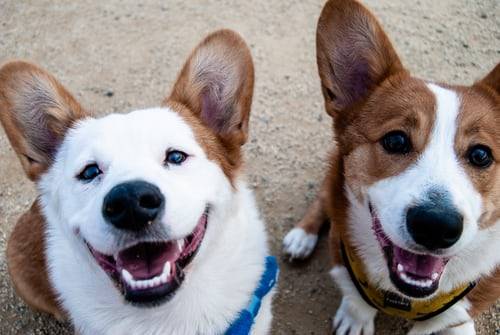
A therapy dog might not sit on the couch and ask you ways you are feeling, but she or he may sit on the couch alongside you at your psychotherapist’s office if you’re okay thereupon. Therapy dogs provide comfort and assistance to those that have illnesses, anxiety, and disabilities.
Therapy dogs are dogs whose purpose is to supply comfort. At nursing homes, for instance, therapy dogs may are available and supply affection to the residents. they need also helped out at hospitals, schools, disaster sites, and with people with learning difficulties and developmental disabilities. How Does Therapy Dog Help? The comfort that a therapy dog provides helps the brain relax. very similar to healthy relationships with others alter how our brains function, the presence of the therapy dog can have an impression on the varied neurotransmitters that one’s brain releases. Oxytocin, for instance, otherwise referred to as “the cuddle hormone,” calms and soothes the systema nervosum, leading to an increased ability to find out. it’s also been found that therapy dogs can help reduce vital signs and therefore the amount of cortisol released, which has implications during a greater ability to heal.1 How Can a Therapy Dog Help My Child With a learning disorder If a toddler is battling difficulty learning, it is often a particularly stressful experience to repeatedly attempt to read or write or participate during a learning activity that doesn’t come naturally. Because of their calming effects, a therapy dog can help soothe children and make them feel more relaxed, which assists in the learning process.2 Therapy Dogs aren’t Necessarily Service Animals Therapy dogs can provide comfort to the ill or soothing to the kid anxiously struggling to read. Service dogs and animals also exist to help people with disabilities but have different training criteria than therapy dogs. Service animals are specifically trained to perform tasks for somebody with a disability. there’s an excellent deal of confusion that exists about how a dog can qualify to be a service animal. Unless the service animal meets a group of minimum standards, she or he can’t be considered a service animal. Once such minimum standards are met, however, a service dog enables someone who features a disability to possess greater independence. Someone who is blind, for instance, can use a seeing-eye dog to travel independently during a city without having to believe an aide. a toddler during a wheelchair, for instance, can believe the therapy dog to select up a dropped item without having to enlist the support of another adult. This independence may result in greater self-esteem, an increased sense of freedom, and a far better quality of life overall
0 notes
Text
Hearing Dogs - Training Your Own Dog as a Hearing Dog
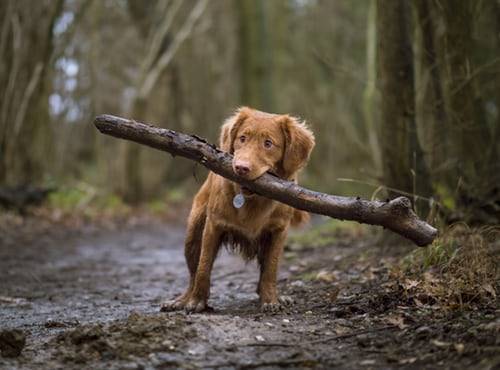
Sometimes, when deaf people become conscious of hearing dogs and the way helpful they will be, they ask if their own personal pets are often trained as hearing dogs.
My mom is deaf and has always had a dog together with her to assist her with letting her know the doorbell is ringing, and so on. Now we would like to urge her dog certified and registered to travel into public places, etc. So Beloved Pet (her dog) can provide even more assistance, and Mom won’t need to rely on one among us kids to let her know if someone is lecturing her. Some readers responded with helpful comments, as follows: You do not need professional certification so as to urge your personal dog recognized as a service dog, consistent with ADA [Americans with Disabilities Act]. - MishkaZena …One must confirm the animal in question has the proper temperament and compatibility. No health issues either. also as been individually trained to perform tasks that will benefit the person with a disability. (ie alerting to doorbell, etc.) - PwD-SD-Awareness From 1996 to 1997, my person[al] dog was trained by Lions Hearing Dogs here in Columbus, Ohio. It cost me nothing but time. he’s trained to let me know when the doorbell rings or someone involves the door (or even on the porch), the fire alarm to require me to the door by nudging me and following him and therefore the timepiece. Those were the three things I needed then. His dog tag never expires in our county and he features a tag identifying him as a working dog. - Liz You can actually get a tag together with your dog’s photo and identifying your dog as a working dog. you’ll check the web site out - www.servicedogtags.com. Jake’s badge has his name thereon and indicates in big red letters that he’s working dog and it’s the ADA data on the rear just in case any business wants to question it. I’m working with an area organization here in Indianapolis who helps with continuing Jake’s training. he’s certified because I say recertified; he’s my right and [if] anyone ever questions me, I don’t hesitate to inform them. He helps me when someone calls my name to when an emergency vehicle is approaching while driving. - Jackie I am currently training my chihuahua-dachshund to be my working dog. we’ve been attending classes through Happy Tails Dog Service Training in Phoenix. it’s tough and there are ups and downs! We still have one test to require full certification from Happy Tails. this may occur after 3 hearing tasks are often met 99% of the time!
0 notes
Text
The Problems With Service Dogs, the ADA, and PTSD
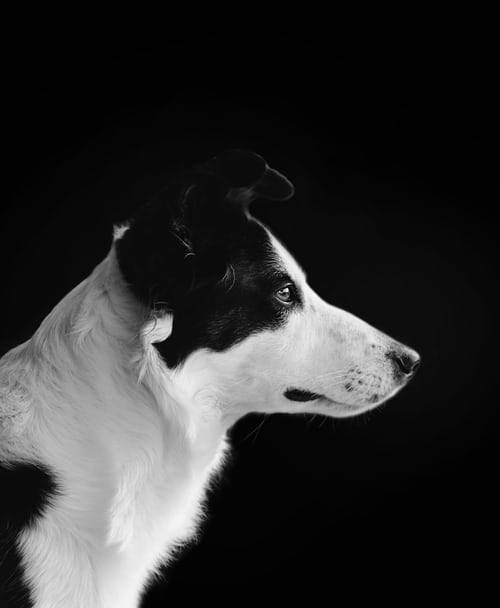
The Americans with Disabilities Act (ADA) may be a comprehensive civil rights law that protects people with disabilities. it had been signed into law in 1990 and its provisions were expanded under the ADA Amendments Act of 2008. In 2010, the Department of Justice released a revised set of regulations for service dogs with reference to title II (state and native government services) and title III (public accommodations and commercial facilities) of the ADA.
These regulations address the rights of service dog handlers in most public spaces.1 There are certain other laws that are applicable in specific situations, like the Air Carrier Access Act of 1986; the Fair Housing Act; and therefore the Rehabilitation Act of 1973 (which, in part, addresses service dog handler access to any program or activity receiving federal financial assistance). However, the ADA is the law that governs most public interactions with service dog teams. “Service Animals” Defined Specifically, the ADA currently defines service animals as “dogs that are individually trained to try to work or perform tasks for people with disabilities.”1 (In certain circumstances miniature horses also are considered service animals but that’s beyond the scope of this text .) this is often the ADA definition of a service dog in its entirety. Mislabeling of Psychiatric Service Dogs for PTSD The ADA goes on to supply samples of tasks that a service dog can perform, including “calming an individual with post-traumatic stress disorder (PTSD) during an attack .” And yet, service dogs for people with PTSD are often mislabeled as “emotional support animals” (ESAs), which aren’t covered by the ADA. The ADA expressly distinguishes between the 2 sorts of dogs, noting that ESAs only provide comfort or emotional support, whereas service dogs are specifically trained to perform disability-mitigating tasks. While the general public has become familiar with seeing service dogs assist people with visual impairments, there remains much ignorance when it involves service dogs that assist people with other disabilities, especially those with “invisible” health issues—including PTSD. What Is a PTSD Psychiatric Service Dog? PTSD service dogs are a kind of psychiatric service dog. Psychiatric service dogs are as legitimate as the other sort of service dog, like a mobility assistance dog, seizure alert dog, or “seeing eye” dog. PTSD service dogs are often trained to perform any number of disability-mitigating tasks, including:2 Retrieving medication Turning on lights and awakening their handler if he or she has an evening terror Searching the house to alleviate symptoms of hypervigilance Guiding their handler home during a dissociative episode Initiating tactile intervention when a handler experiences sensory overload Grounding their handler during a flashback This list is merely a stratified sample, as each person’s experience with PTSD is different and thus each service dog’s responsibilities are unique. Understanding State and Federal Laws for Service Dogs Regardless of what specific tasks a service dog performs, once it can reliably perform a minimum of one disability-mitigating task, it’s considered a service dog, and therefore the provisions of the ADA apply and wish to be enforced. Any state or local law that attempts to countermand, or make more restrictive, any provision of the ADA is actually unenforceable because when a state or local laws don’t align with federal law, federal law takes priority. However, state cops are only charged with enforcing state, not federal, laws. Therefore, if an institution refuses a service dog team entry, and therefore the situation isn’t covered by existing state laws, the sole recourse available is to file a complaint with the US Department of Justice, or file a suit in court. If there are state laws in situ to guard the rights of service dog teams, it’s possible that the worker or establishment has actually committed a misdemeanor and may be fined. this is often why knowing applicable state laws, also because the ADA, is imperative. Limitations Regarding Service Dogs in Training Service dogs in training (SDITs) aren’t covered by federal law, but many nations mandate that SDITs are afforded equivalent protection as their fully trained counterparts. However, the laws sometimes only address specific disabilities, often excluding PTSD and other psychological conditions. Additionally, a number of those laws only cover service dogs trained by state-accredited organizations, not owner-trained service dogs (OTSDs). Where Might Service Dogs Be Precluded Under Federal Law? As per the ADA, service dogs are allowed to accompany their handlers into essentially any space that’s hospitable to the general public, including restaurants and grocery stores (even if state or local health codes prohibit animals on the premises). Service dogs are even allowed into hospital exam rooms and patient rooms. The only exceptions to full public access would be areas that the dog’s presence would compromise the health and safety of others, like hospital operating rooms and burn units where a sterile field could be negatively impacted by the dog’s presence. Service dogs can also be excluded from certain areas under the “fundamental alteration” clause of the ADA, which states that if a modification “would fundamentally alter the character of the products, services, facilities, privileges, advantages, or accommodations” provided by the business entity, the business doesn’t get to change its policies.3 For example, a consistently barking dog would fundamentally alter the services provided by movies or hall. At that time, an employee may ask that the dog is removed. However, an employee might not preemptively bar entry to a service dog team supported the priority that the dog might bark. Service dogs can also be required to go away if they’re not housebroken, or if they’re “out of control” and therefore the owner has not effectively gained control of the animal. Fear, Allergies, “No Pets,” and Other Pet Limitations Neither fear of dogs nor allergies to dogs are acceptable reasons to bar a service dog team from an institution .1 within the case of a severe allergy and a shared space, accommodations must be made for both parties, separating the 2 the maximum amount as possible. The “no pets” signs in establishments don’t apply to service dogs as they’re not pets. Establishments might not cite the “right to refuse service” as an excuse to refuse access to service dog teams any longer than it could invoke it to refuse service to an individual supported race or gender, as people with disabilities are considered a protected class. What a Proprietor May—and May Not—Request From a Handler If proprietors are unsure if a dog may be a pet or a service dog, they’ll ask two very specific questions—and nothing else:1 Is the dog a service dog? What work or task has the dog been trained to perform? Staff members are specifically prohibited from asking about the handler’s disability or demanding that the service dog perform any task it’s trained to try to to. The handler isn’t required to supply an exhaustive list of all tasks that the service dog can perform; naming one task is sufficient. Further, the ADA specifically states that employees cannot require “medical documentation,” “a special identification card,” or “training documentation.”1 meaning that a service dog doesn’t need a card, a tag issued by a state or agency, a vest or the other visibly identifying paraphernalia to be allowed access. Requiring any of those items is inconsistent with the ADA. Is Equipment Required for Protected Use of a Service Dog? The only equipment that’s mentioned within the ADA may be a leash, harness, or tether. And even that’s dependent upon the handler’s specific needs. If a leash, harness, or tether interferes with the service dog’s ability to perform its tasks, a handler can control the dog through the utilization of voice or hand signals or other appropriate methods. Responsibilities of Operators and repair Dog Handlers While service dog handlers may anticipate encountering workers who are unacquainted with the provisions of the ADA, ignorance of the law isn’t an excuse for discrimination. Service dog handlers have a responsibility to stay control of their well-behaved service dog; those that operate public accommodations have a responsibility to understand the laws regarding service dog teams and to allow them access as outlined within the ADA.
1 note
·
View note